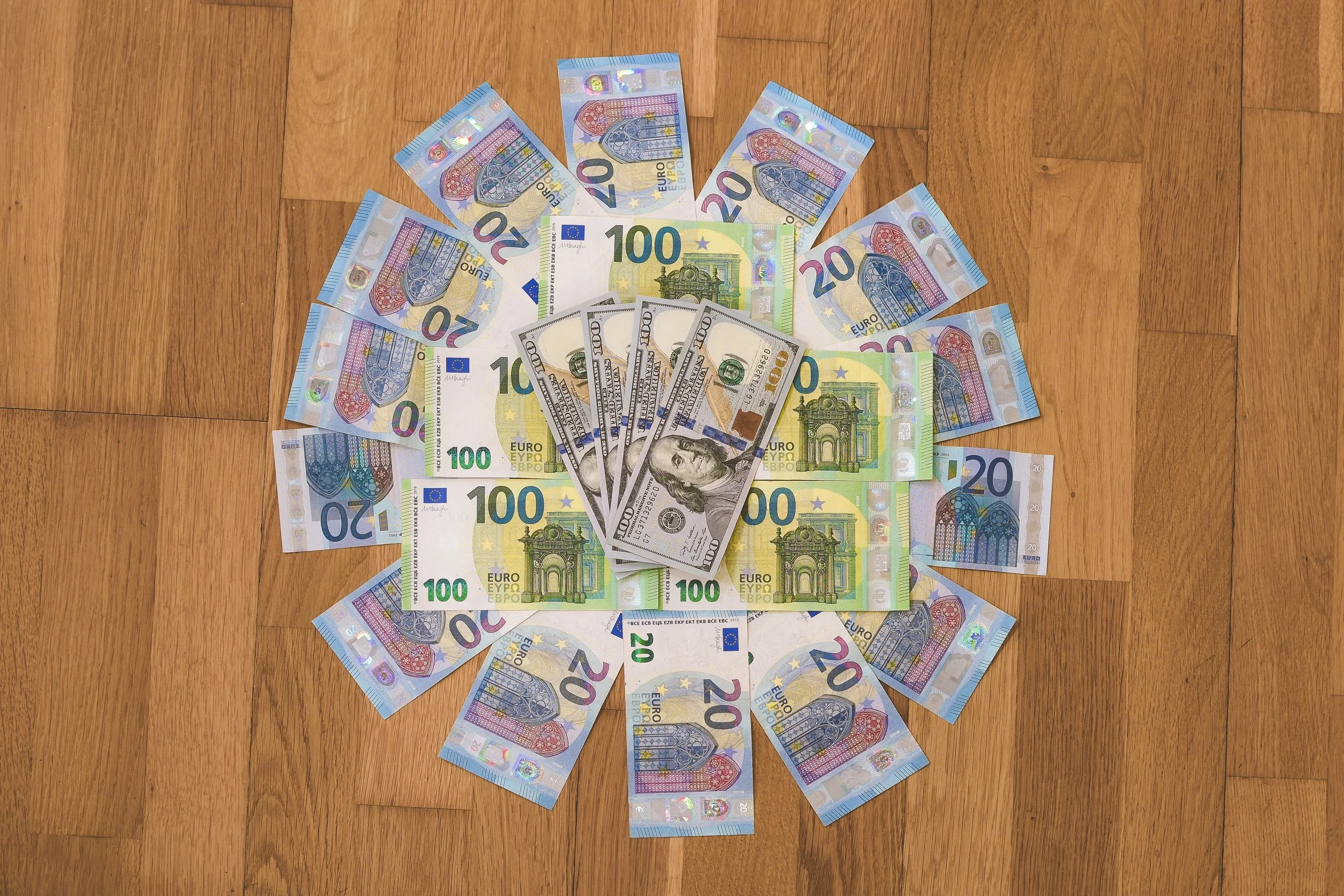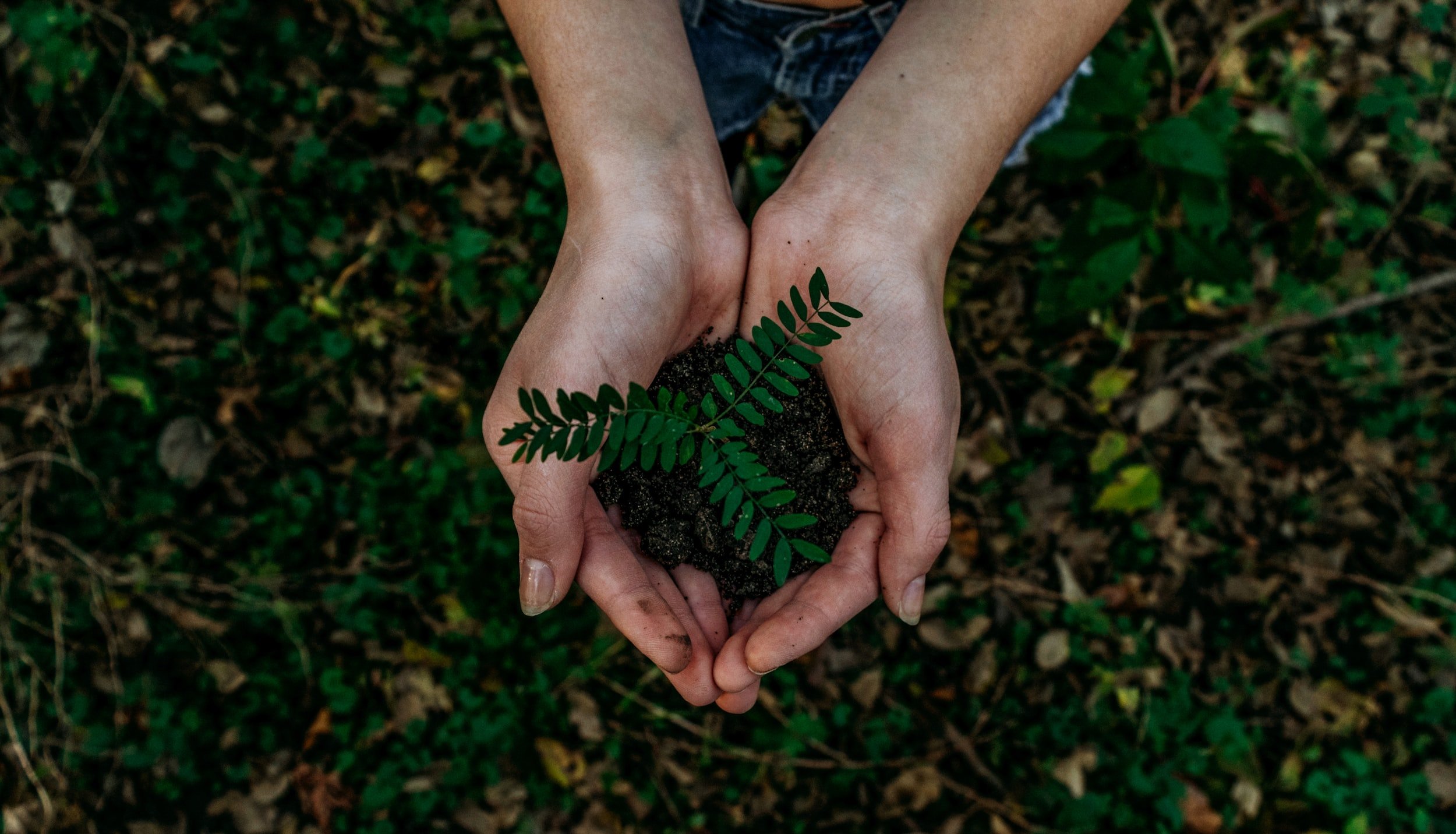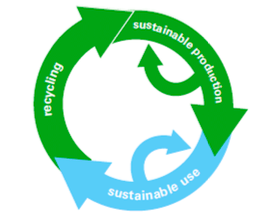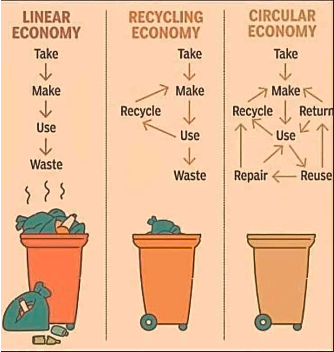Problem Card #7:
Circular Economy
When we think about circular, we can think about a circle or a loop. When we think about economy, we can think about products that are made, bought and sold.
Therefore, the meaning of a circular economy is one where products that are made and sold are done so that there is limited waste.
This Problem Card introduces the industry issue so that students can devise their own STEM-related solutions.
Explore the Problem Card below, and find teaching resources, including Curriculum Activities, customisable Unit Plans and Marking Rubrics at the bottom of the page.
Linear Economy
A Linear Economy takes raw materials and transforms them into products that are used until they are finally discarded as waste. There is no recycling or reusing.
Circular Economy
Circular economy wastes nothing. Materials are recycled or reclaimed.
Composite Materials
Composite materials come from a combination of two or more materials used together to form a much stronger material. Many things are made from composite materials such as Novak Djokovic’s tennis racket, Mark Webber’s F1 car, wind turbines and the new Boeing 787.
The problem with composite materials is that they are difficult to recycle meaning the products end of life enters the waste stream of the linear economy. Many industries are working on a way to recycle composite materials.
Innovate
Read about some real-world issues that will provide invaluable industry context.
When you’re done reading, move on to the CREATE section for an introduction to Problems that students can solve.
You can also download a printable, PDF version of the problem card.
QIPENG GUO - DEAKIN UNIVERSITY
Why some plastics are not part of the circular economy.
Plastics make up around 10% of solid waste in Australia. While we can recycle certain types of plastic, there is a group of particularly stable plastics called thermosets, common in electronic devices, which can’t be broken down and recycled.
Thermoplastics – such as plastic milk bottles, Lego bricks and guitar picks – can be melted and reshaped repeatedly. If you hold a flame to a plastic milk bottle, it will warp and melt.
But thermosets – found in kitchen utensils (think of a plastic spatula)and in electronics such as circuit boards which are intended to be used in hot environments– retain their strength and shape even when heated.
This means that any product made from a thermoset plastic can’t be recycled and enters the waste stream of the linear economy.
If companies are making products from thermoset plastics, they are not part of the circular economy and generate that 10% of solid waste in Australia.
Examples
Timberland produces footwear using recycled tires!
Johnson Controls has managed to design a battery that is 99% recyclable, an incredible feat for a product so chemically complex and hazardous. Do you recycle your batteries?
Create
This section will introduce an industry problem related to the Renewables Industry that students can choose to address with STEM-related solutions.
Making Circular Economies a Reality:
How do we create a circular economy?
In reading these stories we can see that lots of industries and products need to think carefully about the ‘end of life’ of their product. It’s great that wind energy is helping to generate clean and renewable energy but that is not very good if all the used turbines go to waste! There are many uses for plastics and composite materials but we need to think about where they will end up before we start production.
Think about:
If materials cannot be recycled (melted and changed) when they are finished with, is there a way they can be repurposed?
Additional Resources
-

Problem Card
Download a printable, PDF version of this Problem Card.
-

Circular Economy Curriculum Activity
Explore relevant Curriculum Activities
-

Student Worksheet
Download an editable student activity worksheet.
-

Rubric
Download an editable marking rubric
-

Unit Plan
Download an editable suggested Unit Plan





